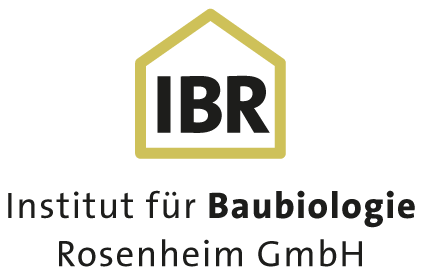

Preliminary notes: Volatile substances can be found in nearly all interiors. Since increased concentrations of these substances may cause health problems, such as mucous membrane irritations, headaches and susceptibility to infections, measuring these compounds in interiors can be an important step in tracking their causes.
Above all, volatile organic compounds (VOCs) are present immediately after applying varnishes, doing paintwork or using adhesives in indoor spaces or (re)furnishing one or more rooms. If the affected rooms are sufficiently aerated, concentrations should usually become normal again after a few weeks or a few months at the utmost. However, processing problems with products containing VOCs and continuous VOC emissions resulting from these problems may constitute a long-term issue. Moreover, some VOCs may be generated by decomposition reactions over time. Examples: the decomposition of the indoor-relevant plasticisers dibutylphthalate and diethylhexyl phthalate with the formation of n-butanol and 2-ethyl-1-hexanol and the separation of aldehydes ranging from C4 to C9 from lino floorings.
Sampling and chemical analysis
Indoor air sampling for VOCs is done using the active sampling method according to ISO 16000-5 on activated carbon, Tenax TA® or XAD-2. Principally, long-term passive sampling is also possible. After solvent desorption (if activated carbon or XAD-2 are used for sampling) or thermodesorption (if Tenax TA® is used for sampling), the analysis is conducted using gas chromatography (GC) and coupled flame ionisation (FID) and mass spectrometer (MS) detectors.
Evaluation criteria
For volatile organic compounds, only a few binding guide or limit values exist. Research conducted in the past reveals that health disorders increase or only start occurring as sum concentration of VOCs rises.
Sum concentration of VOCs
The pertinent literature therefore recommends a long-term average exposure of max. 200 to 300 µg/m³ as the target value for the VOC content (sum concentration) in the indoor air. This is intended as a “hygienic prevention range” which should not be exceed or even not be reached, if possible. For VOC concentrations <200 µg/m³, there is no documentation about harmful effects on human health, even for long-term exposure, provided that the guide values I or II for individual components are not exceeded. According to Seifert (1999), a permanent VOC sum concentration 1,000 to 3,000 µg/m³ should not be exceeded in occupied rooms.
Individual VOC substances
For the following individual VOC substances, the following guide values with toxicological relevance are currently stipulated by the German Umweltbundesamt (federal environment agency):
- Parameter Guide value I [µg/m³] Guide value II [µg/m³]
- Toluene 300 3,000
- Dichlormethane 200 2,000 (24h)
- Bicyclic terpenes (a-pinene as primary substance) 200 2.000
- Styrene 30 300
- Naphthalene 2 20
- Low-aromatic hydrocarbons (C9…C14) 200 2,000
- Acyclic, saturated aldehydes (C4…C11) 100 1,000
For the sum concentration of the xylenes, there is a guide value of 30 µg/m³ stipulated by the German Länderausschuss für Immission (Federal States Committee for Immission Control). For perchlorethylene in the vicinity of dry-cleaners, the German BImSchG (Federal Immission Control Act) stipulates a legally binding limit value of 100 µg/m³.
Guide value I
Guide value I (RW I) represents the concentration of a substance in indoor air for which, when considered individually, there is no evidence at present that even life-long exposure is expected to bear any adverse health impacts. Values exceeding this are associated with exposure that is undesirable for health reasons. For the sake of precaution, there is also need for action in the concentration range between RW I and RW II. RW I is derived from RW II by introducing an additional factor (in rule 10). This factor represents a convention.
RW I can act as a target value during clean-up efforts, which should be undercut rather than merely be complied with.
Guide value II
Guide value II (RW II) is an effect-related value based on current toxicological and epidemiological knowledge of a substance’s effect threshold that takes uncertainty factors into account. It represents the concentration of a substance which, if reached or exceeded, requires immediate action as this concentration could pose a health hazard, especially for sensitive people who reside in these spaces over long periods of time. Depending on how the substance concerned works, guide value II may be defined either as a short-term value (RW II K) or a long-term value (RW II L).
The need for action is to be construed as an immediate test requirement, e.g. in view of clean-up decisions taken to reduce exposure.
Indoor air concentrations of compounds for which no guide values exist can only be assessed by using comparative measurement values. For this purpose, the former German Bundesgesundheitsamt (Federal Health Agency) conducted 479 measurements in representative indoor environments in the 1990s. The distribution of the values obtained there is indicated in annex 1 (BGA distribution statistics) in comparison to the current measurement. For example, the measurement value in table column 10 indicates that 10% of all indoor spaces showed values below this (10-percentile) concentration. Similarly, values in columns for 50%, 90%, 95% and 98% are indicated. This way, the measured value of the present sample can be compared to the reference measurements and assigned to the corresponding category. A value lower than the 10-percentile can be classified as extraordinarily low, a value higher than the 90-percentile can be classified as excessive. A general statement on the toxicity of the corresponding substance cannot be derived from this empirical data. However, it can be said whether this is a typical concentration or a considerably increased value.
Using updated laboratory data, the AGOEF e.V. (Association of Ecological Research Institutes) defined benchmark values for volatile organic compounds in indoor environments.
These values have been published under http://agoef.de/agoef/oewerte/orientierungswerte.html#6


